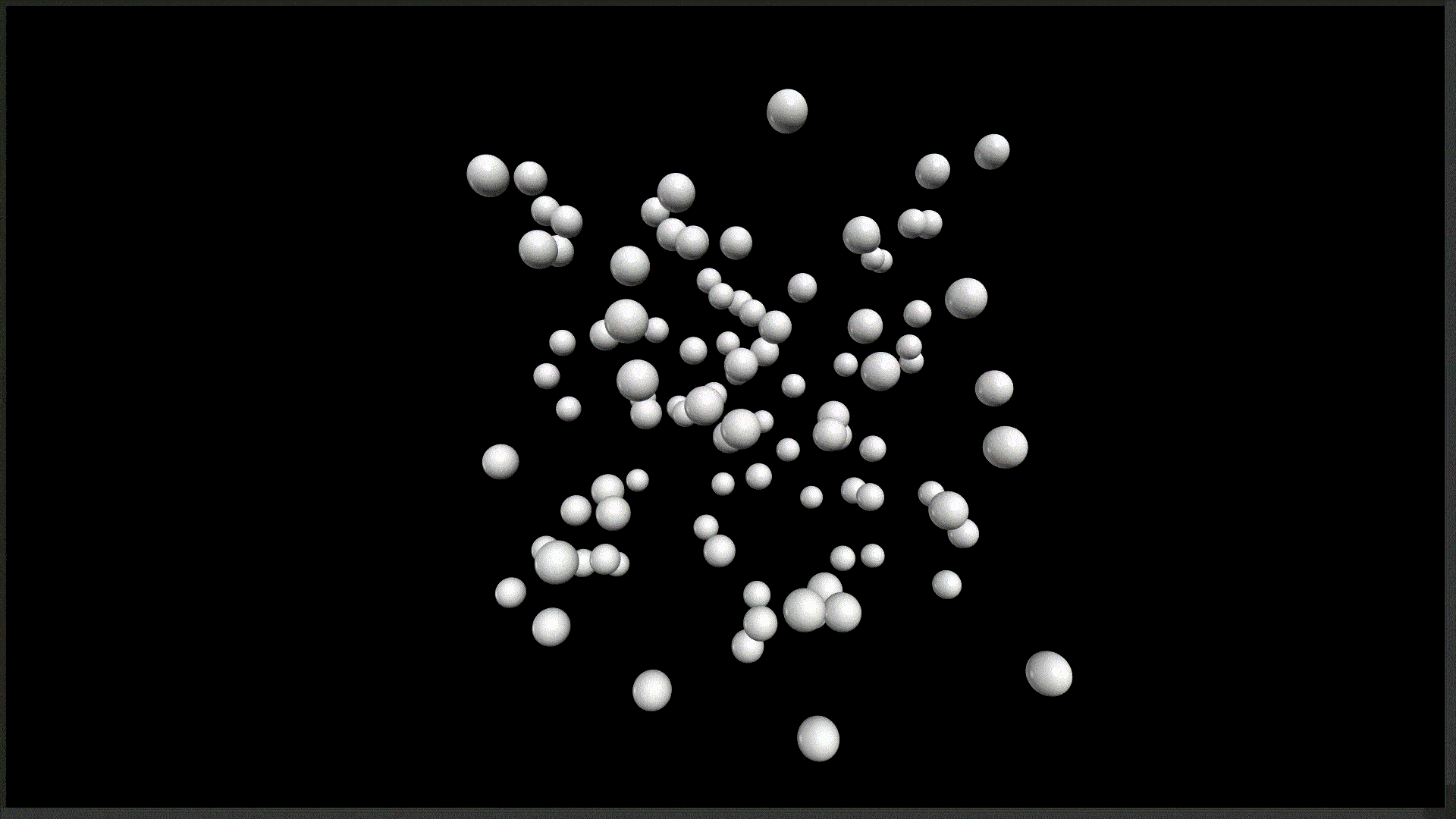Spiraling Particles
The spiral nature of galaxies is really fundamentally fascinating from a physical and mathmatical perspective. I’ve read a bit on why this happens but I’ve been meaning to write a little particle physics simulation just to experiment. Simply put, the theory goes that if particles exist in a three dimensional environment with a random distribution of locations, gravity will bring the particles into a single plane with a spin.
Nothing really to the code, its just the universal gravity equation applied to all particles by all particles. The particles are roughly the size and mass of Earth, and given a small random velocity to go with their random position. I also wrote in a simple collision mechanism to “combine” two particles on impact. If you’d like there are also “Force Arrows” you can uncomment to visualize the net forces acting on the particles.
The Code
pip3 install vpython
from vpython import *
from random import random
scene.width = 1920
scene.height = 1080
# scene.range = 1e8
scene.autoscale = 1
# scene.autozoom = 1
scene.autocenter = 1
numParticles = 100
mapBound = 1e8
velBound = 1e4
arrowScalar = 1e-18
gravConstant = 6.674e-11
colors = [color.white, color.magenta, color.cyan, color.green, color.yellow, color.orange, color.red]
class Particle():
def __init__(self, id):
self.mass = 1e25
self.radius = 6.4e6
self.id = 0
self.collisions = 0
self.x = random()*mapBound*2 - mapBound
self.y = random()*mapBound*2 - mapBound
self.z = random()*mapBound*2 - mapBound
self.xVel = random()*velBound*2 - velBound
self.yVel = random()*velBound*2 - velBound
self.zVel = random()*velBound*2 - velBound
self.velocity = vector(self.xVel, self.yVel, self.zVel)
self.momentum = self.velocity * self.mass
self.sphere = sphere(pos=vector(self.x, self.y, self.z), radius=self.radius)
self.forceArrow = arrow(pos=self.sphere.pos, axis=vector(0,0,0), color=color.green)
self.vecForce = vector(0,0,0)
debree = []
for i in range(numParticles):
debree.append(Particle(i+1))
deltaT = 10
t = 0
while t < 10000000:
rate(1000)
for d1 in debree:
if d1.mass == 0:
continue
d1.vecForce = vector(0, 0, 0)
for d2 in debree:
if d2.mass == 0:
continue
if d1.sphere.pos == d2.sphere.pos:
continue
pos = d1.sphere.pos - d2.sphere.pos
magPos = mag(pos)
if magPos < d1.sphere.radius:
d1.mass += d2.mass
d1.collisions += d2.collisions + 1
d1.sphere.color = colors[d1.collisions%len(colors)]
d2.mass = 0
d2.sphere.visible = False
d2.forceArrow.visible = False
continue
d1.vecForce += (-gravConstant*d1.mass*d2.mass*(pos/magPos))/(magPos**2)
d1.momentum += d1.vecForce*deltaT
d1.velocity = d1.momentum/d1.mass
d1.sphere.pos += d1.velocity*deltaT
# d1.forceArrow.pos = d1.sphere.pos
# d1.forceArrow.axis = d1.vecForce*arrowScalar
t += deltaT
print("fin")
Results

It amazes me that running this results in this sort of phenomena everytime, the particles start out combining into a single particle with a huge amount of mass which then either collects the nearby particles into orbit or the particle has reached an escape velocity and is heading into the depths of space. The orbiters don’t perfectly reflect a planar constraint as I found they acting more like “comets” with long eleptical orbits about the massive particle, but after repeated trials they do generally seem to flatten out.
Really, for a simple as this is, I’m just stunned at how vast space is. Space Engine is a far better visualization of this, but you can see here how quickly things can move away from each other.